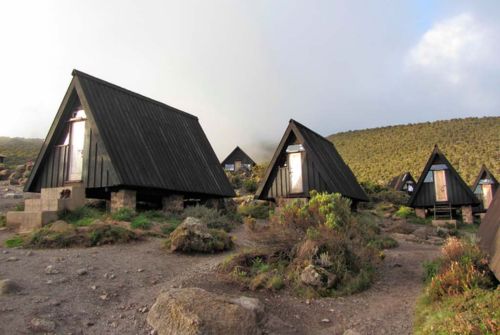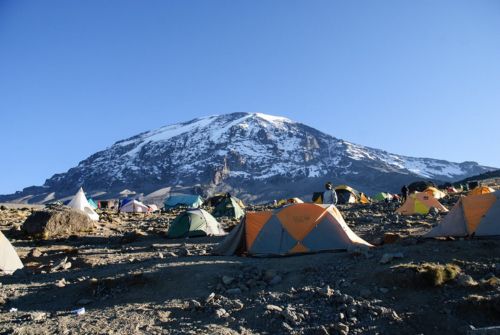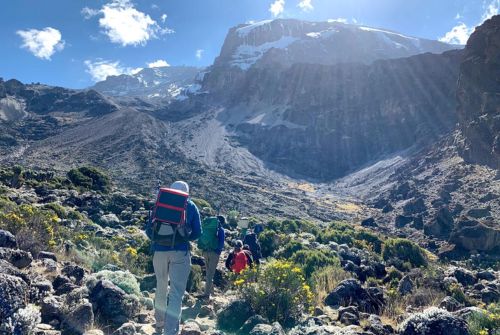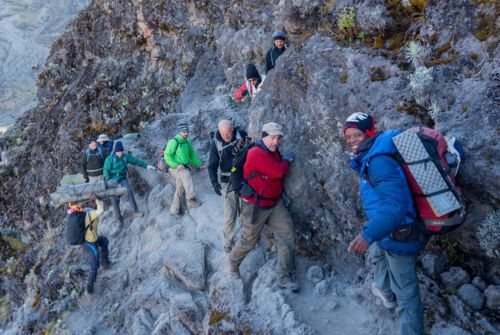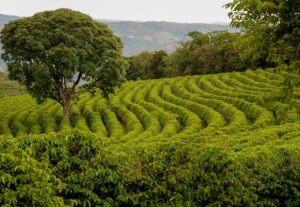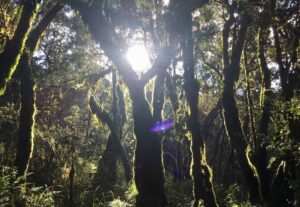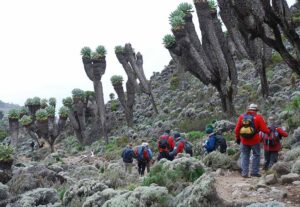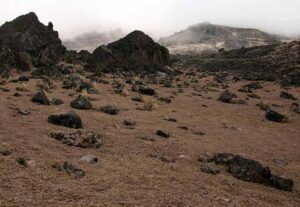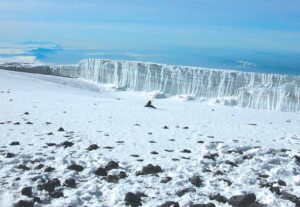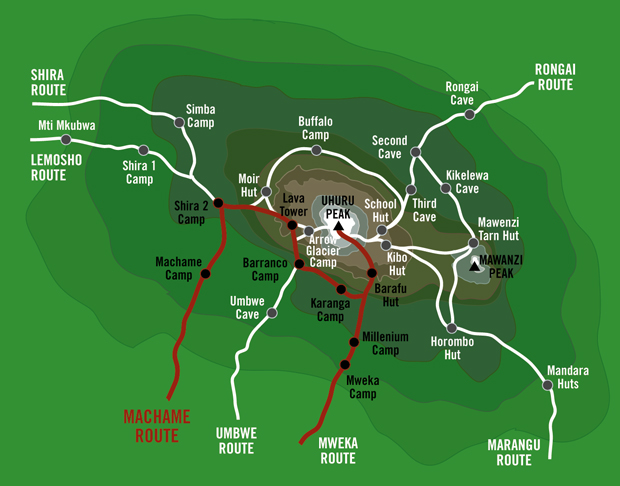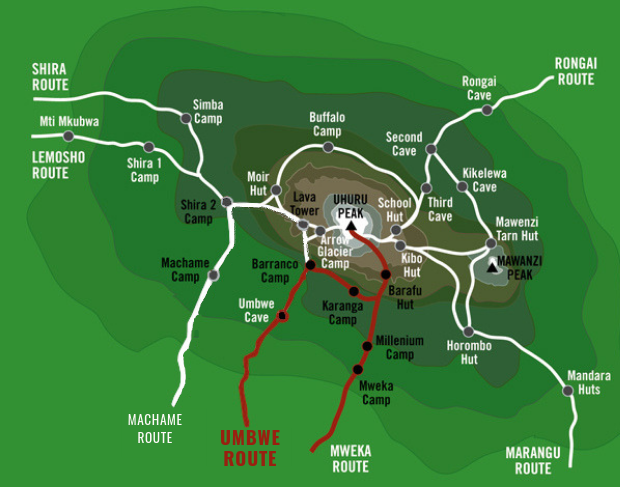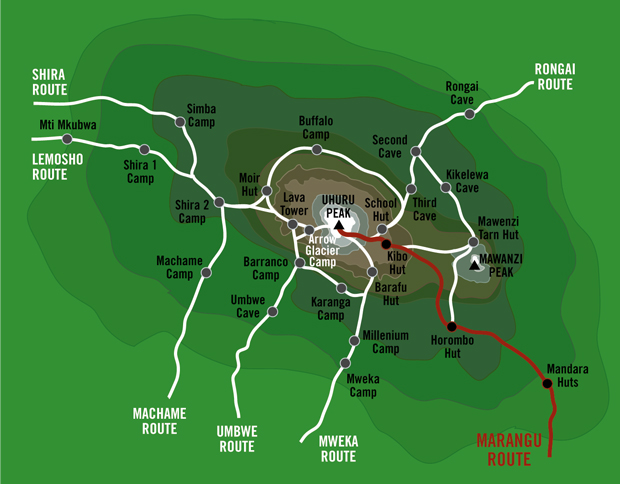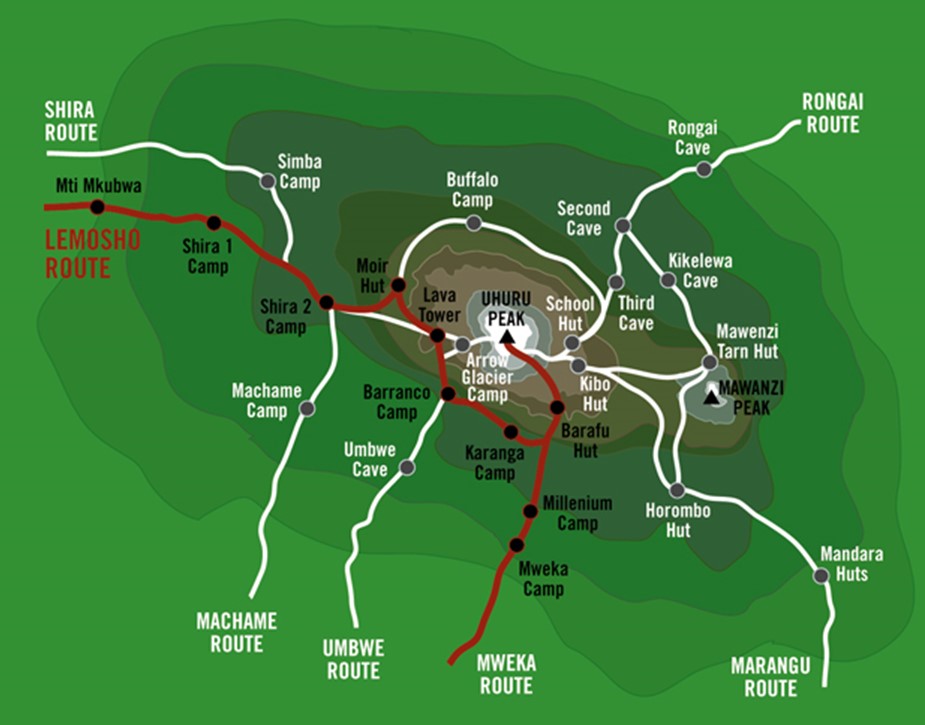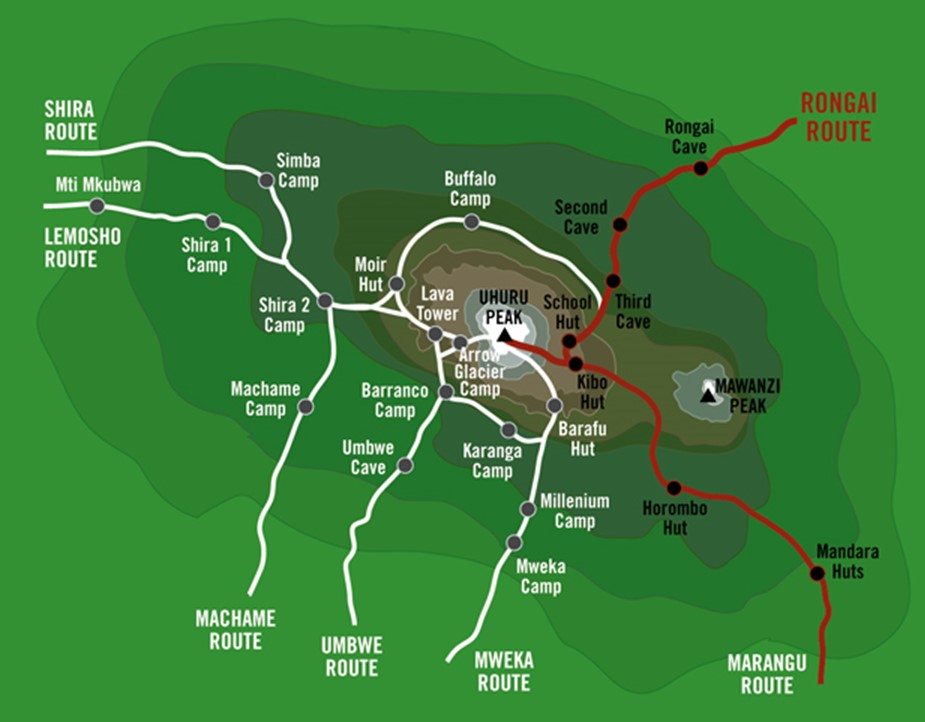Mt. Kilimanjaro is one of the world’s most accessible high summits, a beacon for visitors from around the world. Located near Moshi town in northern Tanzania, the Kilimanjaro National Park was first established as a game reserve in 1921 and designated as a forest reserve in 1973, Mt. Kilimanjaro national park was declared a UNESCO World Heritage Site in 1987 due to its natural beauty. Mt. Kilimanjaro is a dormant volcanic mountain. Its composed of three distinct cones namely Kibo which is the highest peak that stands at an elevation of 5,895meters, Mawenzi which stands at 5,149 meters and Shira which is the lowest peak that stands at 4,005 meters. This volcanic massif stands in splendid isolation above the surrounding plains, is the highest freestanding mountain in the world with its snowy peak looming over the savannah.
Most climbers reach the crater rim with little more than a walking stick, proper clothing and determination. And those who reach Uhuru Point, the actual summit, or Gillman’s Point on the lip of the crater, will have earned their climbing certificates and their memories. But there is so much more to Kili than her summit. Whether you come to climb it or simply to gaze in awe at this remarkable, snowcapped equatorial mountain, drawing near to Mt Kilimanjaro is one of the great experiences of African travel. The ascent of the slopes is a virtual climatic world tour from the tropics to the Arctic, with a total of five different ecosystems. The mountain’s ecosystems are as strikingly beautiful as they are varied and diverse.

